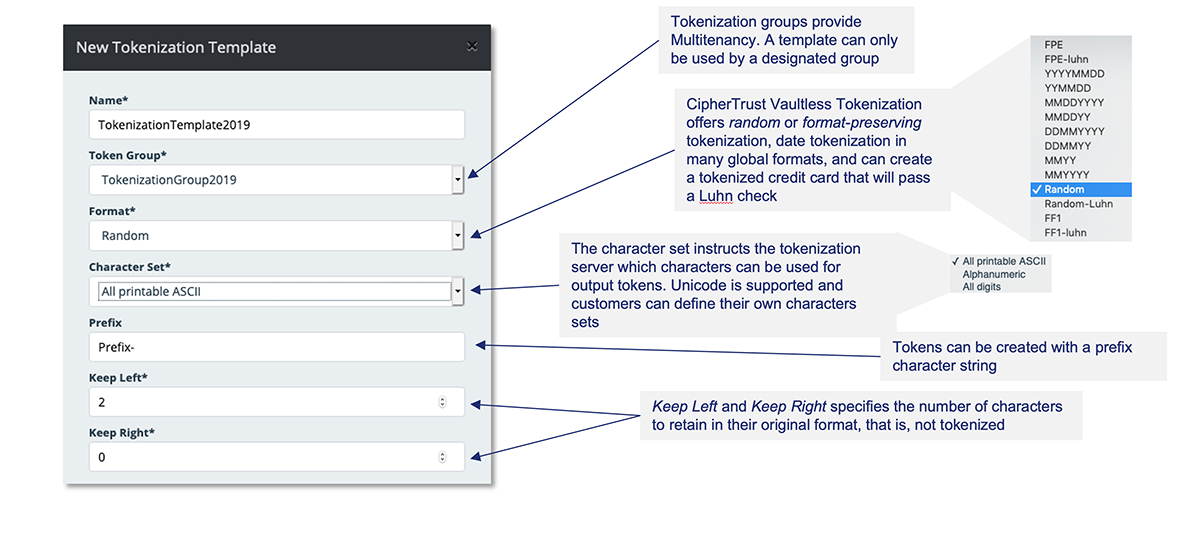CIPHERTRUST TOKENIZATION
CipherTrust Tokenization dramatically reduces the cost and effort required to comply with security policies and regulatory mandates like PCI DSS while also making it simple to protect other sensitive data including personally identifiable information (PII). While there are no tokenization standards in the industry, most tokenization solutions fall into one of two architectures: vaultless- or vaulted tokenization Both secure and anonymize sensitive assets. Tokenization software can reside in the data center, big data environments or the cloud.


